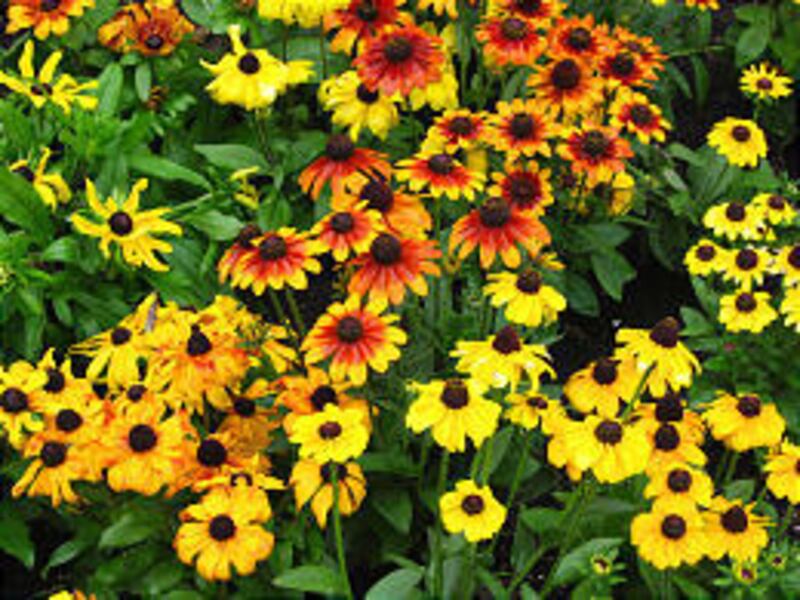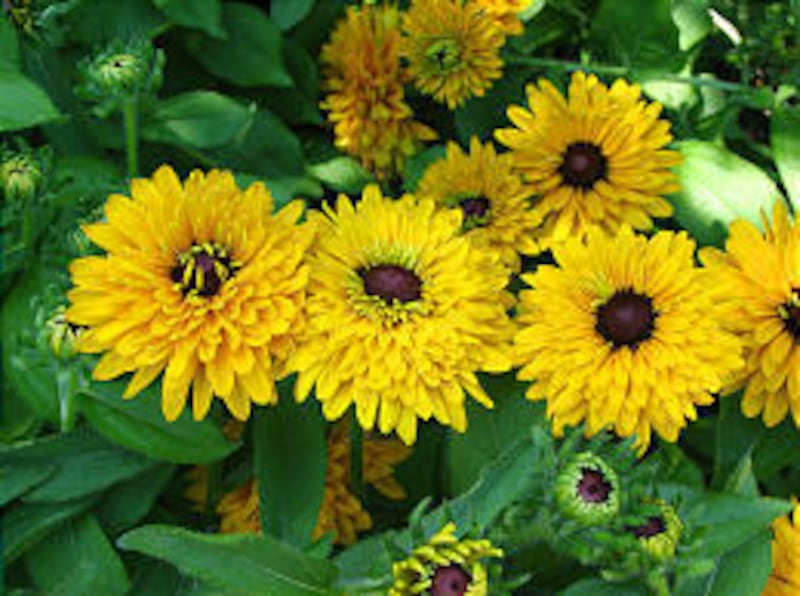Every gardener I talk to lately has the same question. "What can I grow that will take this infernal heat?" While I realize that you are not going to plant these flowers in July, making a few notes now will help your future gardens shine in the summer heat.
Short of a few rocks that won't melt in the sun, there does not seem to be a magic list of totally heat-tolerant plants. Searching for those that rise to the top of the list, there is one that has always caught my eye, the Rudbeckias.
The genus Rudbeckia has about 25 species that are mostly perennial. The name honors Swedish botanist Olaf Rudbeck, and the genus is part of the aster family, which includes other daisy-flowered genera such as dahlia, chrysanthemum and aster.
These great wildflowers of North America are among the common native prairie wildflowers and include more than 30 species. Black-eyed Susans, as they are commonly called, were among the first native domesticated garden flowers. They include some annuals and biennials and some are short-lived perennials.
All these are wonderful plants, but it is a few of the newer varieties that are planted as annuals that caught my eye in many gardens I have visited recently. Plant breeders have used their talents to introduce many new cultivars that are certain to help your garden survive the summer heat.
The 1- to 3-foot-high gloriosa daisy, or Rudbeckia hirta, is generally grown as an annual. Since it is easily grown from seed, the flowers usually self-sow themselves in future gardens. However, many of the varieties do not come true from seed, so do not be disappointed if they are not the same as the parent flowers.
They are excellent cut flowers and dead-heading or cutting back will encourage the plant to bloom throughout the season. There are some advantages to leaving the spent flowers. The flower centers or cones are ornamentally appealing after the petals have dropped. In naturalized gardens, birds feed on the seeds during the winter.
If you choose to treat them as perennials, cut them back and divide them when the plants start to crowd each other. The best time to divide the plants is in the late fall or early spring.
Rudbeckias are like a bright sunbeam shining in the midst of your flower beds. Like tiny 6-inch suns, they are there every morning as the celestial sun greets your garden. They bloom prolifically from early summer until frost and are stunning additions that add strong warm colors to all kinds of flower beds.
While the plants vary considerably, all have large, hairy leaves and stiff stems. The strong, stiff stems are an advantage because the plants do not need staking. If your flowers are bending over, you are likely giving them excessive amounts of nitrogen fertilizer.
Their daisy-like flower heads have single or double petals and the colors range from bright yellow to cinnamon to deep mahogany with almost every shade in between. Some even have multiple colors on the same flowers.
Several new cultivars are striking garden choices. Rudbeckia "Maya" has a more recessed center surrounded by numerous shorter petals. "Autumn Colors" are variable and show very intense coloration from yellow to mahogany. "Range of Colors" is even more variable and "Toto Mix" also shows many different colors from the same seed source.
Most types have prominent, dark centers, but cultivars, including "Prairie Sun," "Irish Eyes" and "Green Eyes" have light-green centers. Look for these and many other cultivars at local nurseries next spring.
Black-eyed Susans thrive in all but very soggy soil and will even tolerate clay soils if you manage the water correctly. They hold up well during hot, dry periods, work well in waterwise gardens, and they thrive when planted in full sun.
Another bonus is that they seldom are bothered by insects or other pests. The most frequent problems I see are spider mites and scale. Try keeping the plants clean by occasionally washing the foliage with the garden hose or spraying with insecticidal soap.
Most foliar diseases are not serious because of our dry climate. Powdery mildew sometimes appears, but I generally consider spraying to be unnecessary. If it becomes too serious, cut back the foliage and let new leaves and flowers grow back. Root diseases are not usually a problem when the plants grow in well-drained soils.
Consider some of these tough plants to help your summer garden shine. While the heat stress is more than you or your flowers want to bear, finding the right plants for the right place always makes your garden tasks much easier.
Larry Sagers is the horticulture specialist, Utah State University Extension at Thanksgiving Point.


